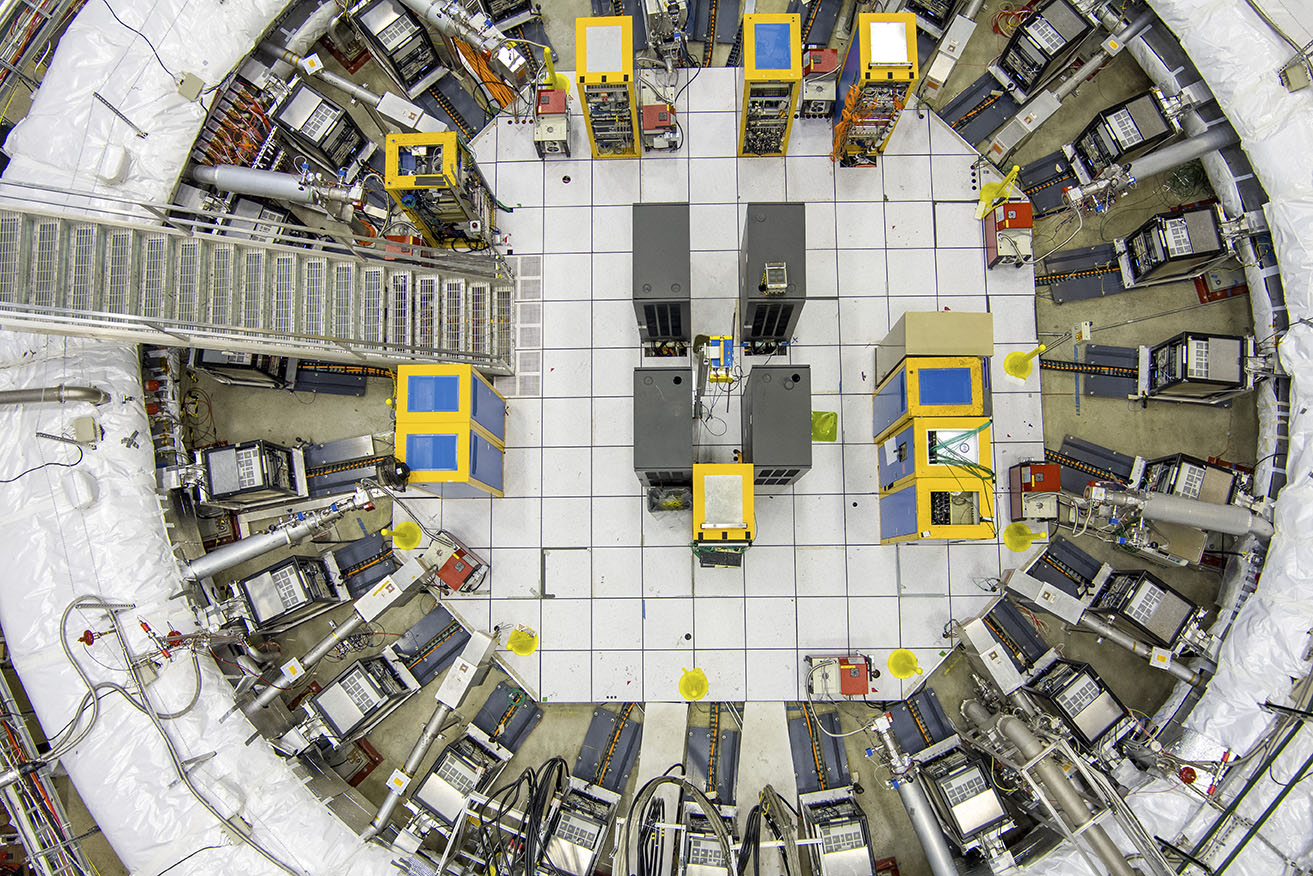- Get link
- X
- Other Apps
- Get link
- X
- Other Apps

Muon g-2 Announces Most Precise Measurement of the Magnetic Anomaly of the Muon
In a landmark achievement for particle physics, the Muon g-2 experiment at the U.S. Department of Energy’s Fermi National Accelerator Laboratory (Fermilab) has unveiled its third and final measurement of the muon magnetic anomaly. This highly anticipated result not only aligns perfectly with the experiment’s previous findings but also achieves an unprecedented level of precision, solidifying its position as the world’s most accurate measurement for years to come.
The experiment, aptly named Muon g-2 (pronounced “gee minus two”), focuses on the subtle "wobble" of muons, fundamental particles similar to electrons but significantly more massive. These particles possess a quantum mechanical property called spin, which behaves like a tiny internal magnet. When exposed to a magnetic field, this internal magnet precesses, much like a spinning top.
Key Highlights of the Muon g-2 Experiment's Final Result:
- The final result boasts an exceptional precision of 127 parts-per-billion, surpassing the initial experimental design goal of 140 parts-per-billion.
- This measurement serves as a rigorous test of the Standard Model of particle physics, the prevailing theory describing the fundamental forces and particles of the universe.
- The experimental value closely aligns with previous results from 2021 and 2023, reinforcing the robustness of the findings.
Regina Rameika, the U.S. Department of Energy’s Associate Director for the Office of High Energy Physics, remarked, “The anomalous magnetic moment, or g–2, of the muon is important because it provides a sensitive test of the Standard Model of particle physics. This is an exciting result and it is great to see an experiment come to a definitive end with a precision measurement.”
Why is the Muon Magnetic Anomaly Important?
Nearly a century ago, the value of the muon's g-factor was predicted to be 2. However, experiments revealed a slight deviation from this value, known as the magnetic anomaly of the muon, denoted as aμ, and calculated as (g-2)/2. This anomaly encodes the effects of all Standard Model particles, offering theoretical physicists a unique window into the intricacies of the universe.
Earlier measurements conducted at Brookhaven National Laboratory hinted at a possible discrepancy between experimental results and theoretical calculations at the time. Such discrepancies could potentially point towards new physics beyond the Standard Model, such as the existence of undiscovered particles influencing the muon's precession.
To delve deeper into this intriguing possibility, physicists embarked on an ambitious upgrade of the Muon g-2 experiment. In 2013, Brookhaven’s magnetic storage ring was transported to Fermilab, where it underwent extensive enhancements before commencing operations on May 31, 2017.
Peter Winter, a physicist at Argonne National Laboratory and co-spokesperson for the Muon g-2 collaboration, expressed his excitement: "This is a very exciting moment because we not only achieved our goals but exceeded them, which is not very easy for these precision measurements. With the support of the funding agencies and the host lab, Fermilab, it has been very successful overall, as we reached or surpassed pretty much all the items that we were aiming for.”
The Latest Experimental Value:
The latest experimental value of the magnetic moment of the muon from the Fermilab experiment is:
a μ = (g-2)/2 (muon, experiment) = 0.001 165 920 705 +- 0.000 000 000 114(stat.)
+- 0.000 000 000 091(syst.)
This result is based on the analysis of data collected between 2021 and 2023, combined with previously published datasets, effectively tripling the data used in the 2023 analysis.
What's Next for Muon g-2?
While the primary analysis has concluded, the vast dataset collected over six years holds further potential. The collaboration plans to explore the muon's electric dipole moment and test fundamental properties of physical laws related to charge, parity, and time-reversal symmetry.
Lawrence Gibbons, professor at Cornell University and analysis co-coordinator for this result, aptly summarized the experiment's significance: “For over a century, g-2 has been teaching us a lot about the nature of nature. It’s exciting to add a precise measurement that I think will stand for a long time.”
The Muon g-2 collaboration, comprised of nearly 176 scientists from 34 institutions across seven countries, exemplifies the power of international collaboration in scientific discovery. This experiment’s success underscores the importance of diverse expertise, bringing together high-energy physicists, accelerator physicists, atomic physicists, and nuclear physicists.
In conclusion, the Muon g-2 experiment's final result represents a remarkable achievement in precision measurement and a significant contribution to our understanding of the fundamental laws of nature. It not only reinforces the Standard Model but also provides a crucial benchmark for future investigations into the mysteries of the universe, paving the way for potential breakthroughs in particle physics for decades to come.
Tags: Muon g-2, Fermilab, Magnetic anomaly, Particle physics, Standard Model, Experiment result, Scientific measurement, Physics, Science, Muon
Source: https://news.fnal.gov/2025/06/muon-g-2-most-precise-measurement-of-muon-magnetic-anomaly/
Experiment result
Fermilab
Magnetic anomaly
Muon
Muon g-2
Particle physics
Physics
Science
Scientific measurement
Standard Model
- Get link
- X
- Other Apps
Comments
Post a Comment